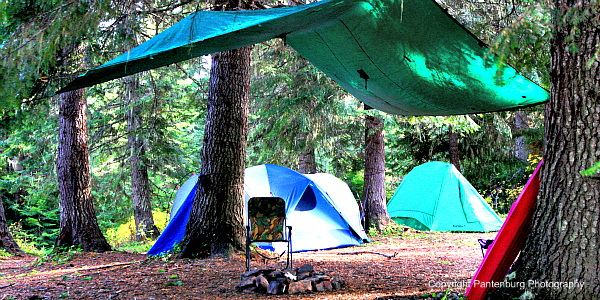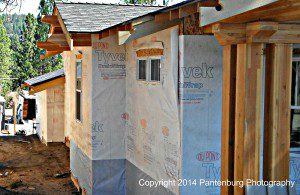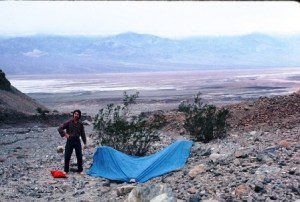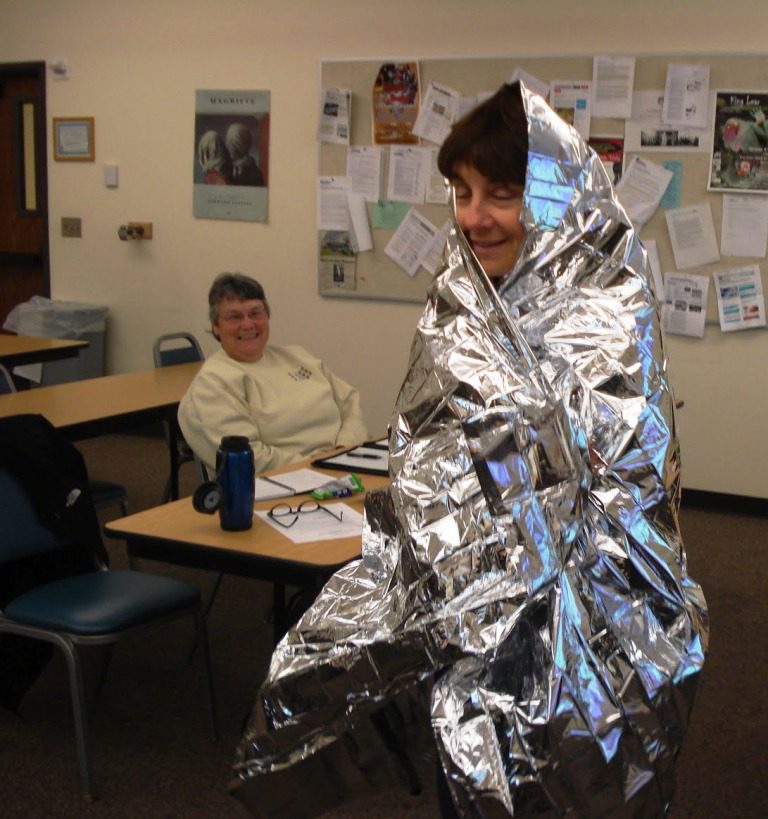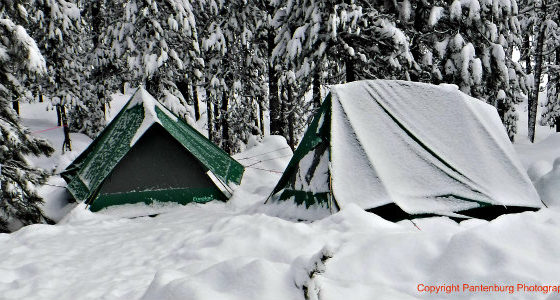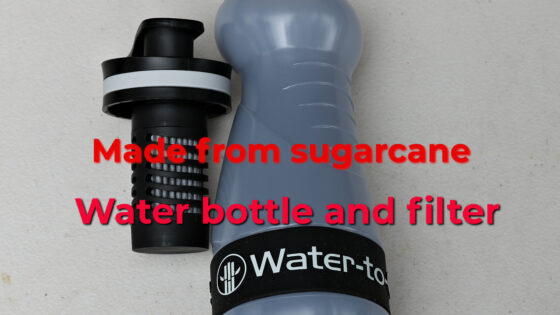Tarps can be really valuable survival tools. But what if your budget is limited and you need several that can effectively do the job? Here are some tarp materials that have worked for me.
by Leon Pantenburg
A thunderstorm heads your way. Or you need shade from the blazing desert sun. Or you’re lost, the snow is deep and a storm is blowing in. In any of these vastly different instances, a tarp may provide the best shelter available.
Now, if money is no object, just go out and buy a nice lightweight nylon tarp with grommets from an outdoors store. But suppose your budget is limited (Whose isn’t?) and you want the best shelter tarp available, within your budget. Or possibly, you’re making multiple survival/preparedness kits, need to economize but don’t want to compromise on quality.
Here’s how to choose the best tarp to fit your survival needs – and budget – in order of expense.
Visqueen or Tyvek: Visqueen is a plastic sheet material used for a variety of construction purposes. Tyvek is most commonly used as a moisture barrier between exterior walls and the siding by home builders. It generally comes in large, industrial-size rolls.
In August 1976, I hiked the 225- mile John Muir Trail in California. My only shelter was a piece of 10-foot by 12-foot, opaque four-mil-thick Visqueen. Despite nine continuous days of rain, the Visqueen kept me dry at night and during frequent afternoon showers.
My reasons for using Visqueen were simple: I had to cut weight, didn’t have a tent and couldn’t afford to buy anything else.
The following year, I did a 14-day solo backpack through the Thoroughfare Creek area of the Yellowstone backcountry. That same piece of Visqueen was my only shelter, and again, it worked well.
Visqueen is cheap and durable – you can get a piece big enough to make a tarp shelter for under $5. Don’t buy a clear or opaque piece if you anticipate possibly needing it for shade.
Tyvek® is also inexpensive and may be free if you know a building contractor. Check out dumpsters at a construction site. You may find – as I did last year – a partial roll that was tossed when the job was done.
The disadvantage is that Tyvek is somewhat stiff and noisy when new. A few rain showers, or a wash cycle in a washing machine will take out much of the noise.
Neither of these products come with grommets, so you’ll have to think about improvising fastenings before you actually need to use the tarp.
The Standard Plastic Tarp: The ubiquitous blue (or green, brown, silver or whatever) plastic tarp has its own cult following, and I’m one of them. I carry several of different sizes in my car, and have used them in conjunction with everything from changing a tire to covering a seat to protect it from a muddy dog. I’ve slept under the plastic tarps in the snow, rain and blazing sun.
A blue tarp can be slung over a picnic table to make a rainy campout more fun. It can also provide shade from the heat of the mid-day sun.
Plastic tarps generally have grommets in the corners and sides, making for easier pitching. They can be ridiculously cheap, and I usually pick up an extra 8’x10′ or 10’x12′ when I catch a sale. A 12’x16′ is an incredibly useful size. Even if I don’t need another, you just never know when somebody might. I gave one tarp away to a homeless guy on a corner with a sign that said he needed camping gear.
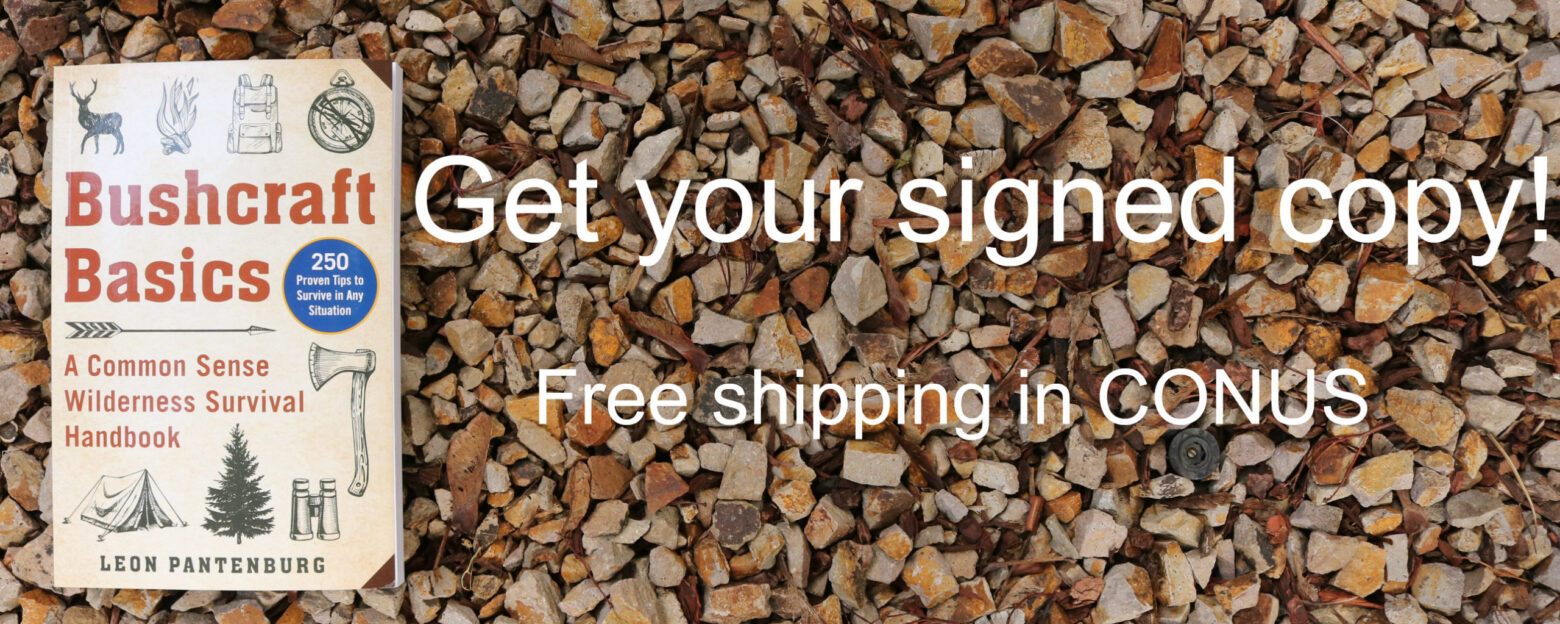
Nylon: There is a dedicated group of outdoorspeople who prefer a tarp over all other types of portable shelters. These folks are looking for light weight and a compact package. That’s understandable – some of the high end nylon tarps weigh a few ounces. A tarp may be the best covering for a quick snow trench shelter, or for making a refuge from driving rain.
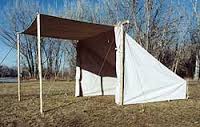
This is actually a tent, but it is also technically a tarp shelter, I think. (24hourscampfire.com photo)
These lightweight tarps can be spendy, with high end grommets and reinforced material. I own several, and the light weight and compact size makes them really handy. My emergency gear pack and Ten Essentials packs both have nylon tarps in them.
Dedicated Shelter Tarp: These tarp shelters are essentially tents without mosquito netting, and are designed to work with poles and stakes and are pre-cut to a specific design.
These range from the latest high-tech designs, to the classic plains Indian tipi.
The design of a dedicated tarp shelter should be chosen to fit your needs and the area you anticipate using it in. A shelter tarp that will be used in the north woods in the summer could be a miserable choice if the mosquitoes, black flies and no-seeums are out in force. On the other hand, the ability to warm a shelter with a campfire on a cold, windy day could be really nice.
A word of caution: Tarp shelters are not mosquito or snake proof. If you camp where there are crawly things that bite, get a snake proof tent or a jungle hammock. Choose all your survival gear with care.
Please click here to check out and subscribe to the SurvivalCommonSense.com YouTube channel – thanks!

